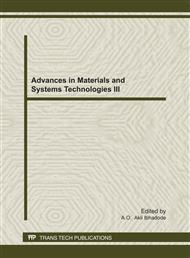p.151
p.159
p.167
p.177
p.185
p.191
p.199
p.205
p.215
On the Generation of Random Numbers for Symmetric Cryptography Utilizing Astronomical Data
Abstract:
In this paper, a novel method for obtaining the random numbers utilizing astronomical data is proposed. The method uses two different algorithms for generation of random numbers sequence. Astronomical data collected from the scientific study of the universe, especially of the relative motions, relative positions of astronomical objects are utilized in our algorithms. The first algorithm uses a particular astronomical object in a fixed position for the random number generation. The random sequence is obtained from the relative positions of other astronomical objects with reference to the selected object. The second algorithm selects any diverse astronomical object as a reference in a varying mode for computation of the relative positions of different objects with that reference to generate the random number stream. Both algorithms use mathematical equations for computing the next jump or hop to the other astronomical object. The generated random numbers obtained from the two algorithms are tested with a standard statistical test suite including, frequency test, run test, random binary matrix rank test, complexity test, universal test and entropy test. The results obtained from the statistical tests of the two algorithms are compared with the other publicly available random number generation techniques, like, linear congruential and modular exponentiation. The preliminary results show that the algorithms perform well. The random numbers generated by our method has sufficient period and unpredictability that makes them suitable for consideration as encryption keys in symmetric cryptography.
Info:
Periodical:
Pages:
185-190
Citation:
Online since:
October 2011
Price:
Сopyright:
© 2012 Trans Tech Publications Ltd. All Rights Reserved
Share:
Citation:


